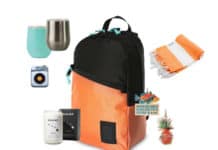 As CEO and founder of wet paint group, which specializes in creating compelling corporate events, Doug Chorpenning is tasked with helping organizations tell their story in creative ways.
As CEO and founder of wet paint group, which specializes in creating compelling corporate events, Doug Chorpenning is tasked with helping organizations tell their story in creative ways.
From Comcast to Time Warner, Doug’s disruptive and impactful branding techniques have set a standard that is hard to replicate. Here, Doug explains why meetings fail and how to spot those red flags before the game begins.
You are an expert at brand-building. What are the common mistakes you see when a meeting fails to tell a brand’s story?
I think most event professionals still focus on the logistics of an event and not the core message or story of the event. If designed properly, a face-to-face event can have a much greater impact on the bottom line than any other marketing medium. However, event managers are still more concerned with ceiling heights and ballroom dimensions versus brand messaging and connecting with attendees on a personal level.
We use the simple event design construct of Intrigue, Immerse and Inspire. Ask yourself how each moment of the event is accomplishing these three things. Make every moment matter. No matter how insignificant you might think some of the moments are. Attendees find stories in the little things. Recently, we placed a local hand-made soap scrub in each of the public bathrooms at our host hotel with a customized hand written sign. We heard attendees talking among themselves on what a special of a touch point that was. You never know where the stories emerge from, so keep leaning into the creative process and surprising the attendees along the way.
“Millennials do not like to consume information in a static environment. Content needs to be presented in smaller snippets and with greater emphasis on how the presentation materials will impact their lives on a personal level.”
What are your thoughts on Millennials and meetings? Much has been written about how this generation engages differently. Do you agree?
Millennials do not like to consume information in a static environment. The conventional general session format will be lost on these attendees. They have much shorter attention spans and need to be stimulated early and often. Content needs to be presented in smaller snippets and with greater emphasis on how the presentation materials will impact their lives on a personal level. In a recent event, we designed the content to be featured in eight-minute, “speed dating” sessions. We had rotating subject matter experts, each speaking on relevant and meaningful topics. The attendees were much more engaged, informed and inspired as a result of this format.
What was one of the best meetings you ever participated in as an attendee—not speaker—and why was it memorable?
One event that left a lasting impression was a fam trip to Aspen, Colorado. The reason it stands out is that they did an exceptional job of introducing us to the locals. We felt like a local and that we were in the know. We enjoyed a gourmet, beer-pairing dinner with one of the area brew masters, and we did a bike scavenger hunt through town and learned about the rich history of Aspen. I have experienced this during other events, but there was a certain authenticity that existed and we felt like we were a genuine part of the community. And that’s a feeling that goes a long way.










